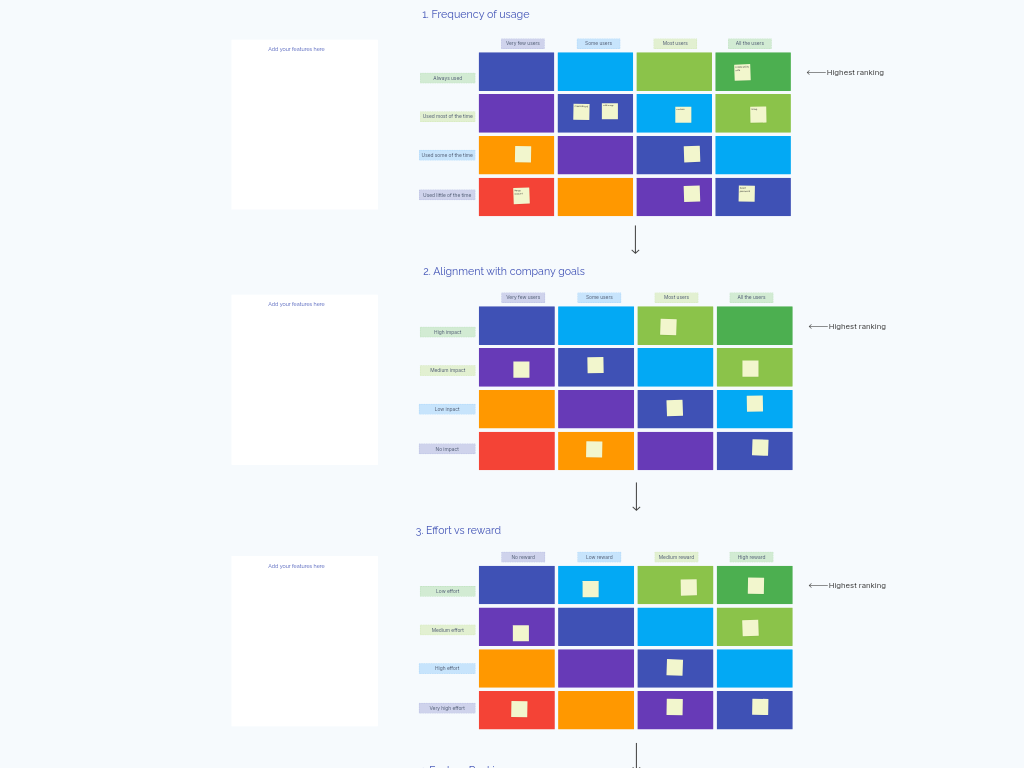Product Backlog Template: Your Agile Development Workflow Manager
The Product Backlog template is a Kanban-style board designed to help development teams visualize, organize, and prioritize their work items effectively. Based on the actual board used by the Metro Retro team, this template provides a streamlined way to manage your product development lifecycle from initial ideas to deployment.
What Is a Product Backlog?
A product backlog is a prioritized list of work items that a team plans to deliver. In agile methodologies, the backlog serves as the single source of truth for what needs to be done. This template transforms that concept into a visual Kanban workflow, allowing teams to track items as they move through different stages of development.
The template is structured as a classic Kanban board with additional sections for backlog management and team notes, creating a complete ecosystem for product development tracking.
Benefits & When to Use
- Visibility: Get a clear overview of all work items and their current status
- Prioritization: Easily organize and reprioritize work based on changing business needs
- Progress Tracking: See at a glance what's moving forward, what's stuck, and what's been completed
- Team Alignment: Keep everyone on the same page about priorities and progress
This template is particularly valuable during:
- Sprint planning sessions
- Product roadmap reviews
- Daily standups
- Release planning
- Stakeholder updates
How to Run a Product Backlog Session
Set Up Your Backlog (15-30 minutes)
- Place new feature ideas, bug reports, and improvement suggestions in the "Backlog" column
- Add sufficient detail to each item for team understanding
- Consider color-coding cards by type (feature, bug, tech debt, etc.)
Prioritize Work Items (30 minutes)
- Move the highest priority items from "Backlog" to "Todo"
- Arrange items in "Todo" in priority order (top = highest priority)
- Discuss and reach consensus on priorities with the team
Track Ongoing Work (Continuous)
- Move cards through the workflow columns as work progresses:
- Todo: Ready to be worked on
- In Progress: Currently being developed
- Implemented: Code complete but not yet deployed
- Deployed: Released to production
- Closed: Completely finished and verified
- Move cards through the workflow columns as work progresses:
Manage Technical Debt (As needed)
- Use the "Trash" section for deprecated items or those decided against
- Don't delete these items - keeping them visible helps prevent reopening settled discussions
Document Decisions (As needed)
- Use the "Notes" area to capture important context, decisions, or dependencies
- Document acceptance criteria for complex items
Review and Adjust (Weekly or bi-weekly)
- Regularly review the entire board with the team
- Adjust priorities based on feedback, new information, or changing business needs
- Clean up completed items by moving them to "Closed"
Tips for a Successful Product Backlog Session
- Add Swimlanes: Create horizontal swimlanes to separate different types of work (e.g., features, bugs, infrastructure) or different products/modules
- Set WIP Limits: Consider adding work-in-progress limits to prevent overloading your team
- Regular Grooming: Schedule dedicated time for backlog refinement to keep items current and well-defined
- Include Estimates: Add story points or time estimates to help with sprint planning
- Visualize Blockers: Use a visual indicator (like a red dot) to highlight blocked items
- Link to Details: For complex items, include links to detailed specifications or requirements
- Stakeholder Access: Share a view-only version of the board with stakeholders for transparency
Remember that this board is meant to be a living document that evolves with your product. Don't hesitate to customize columns, add sections, or adjust workflows to match your team's specific process.



